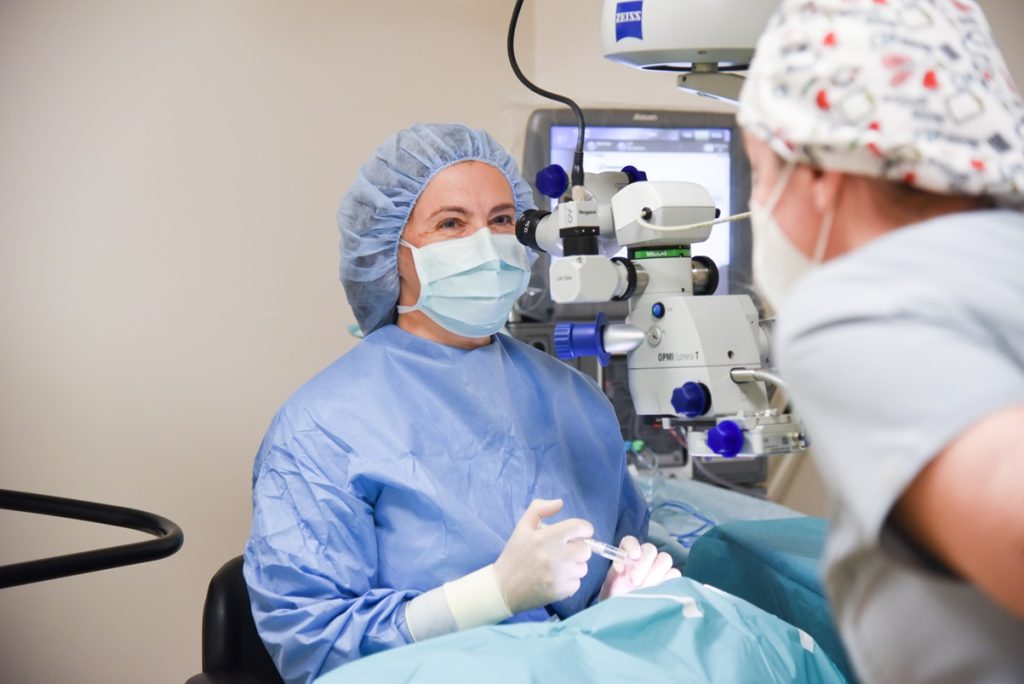Modern eye surgery is rapidly advancing, offering patients opportunities to improve the quality of life-related to vision. One of the most relevant and proven innovations in eye surgery is multifocal lenses. Who are these lenses best for, and what problems do they address?
According to Loreta Kuzmiene, a microsurgeon at the Lirema Eye Clinic, multifocal intraocular lenses (IOLs) are artificial lenses that are implanted during cataract surgical treatment or in case of permanent farsightedness (presbyopia) developing at an older age, when the patient does not want to wear glasses or contact lenses.
“These artificial lenses replace the natural lens of the eye, which, due to age-related changes or other eye diseases, loses its transparency and flexibility. The main features of a multifocal artificial lens are designed to ensure that the patient can see clearly at various distances – up close, medium distance and far,” says the doctor.
Three focal points for clear vision
Multifocal lenses perform their function with three focal zones arranged in the lens. These zones allow light to pass through in different ways so that the brain can receive and process images from different distances.
“After implanting a multifocal artificial lens, the patient’s vision becomes sharp when reading a book, knitting, looking into the distance, using a computer or driving. These lenses allow the eye to adapt to different situations, which is especially important for a more comfortable everyday life,” L. Kuzmienė clarifies.
According to the doctor, not all patients are suitable for this type of artificial lens. Most often, they are implanted in older patients over 50 years old.
“Multifocal artificial lenses are recommended if the patient does not suffer from concomitant eye diseases, works, likes active leisure time and needs good vision at various distances,” says the microsurgeon.
The doctor emphasizes that these lenses not only allow the patient to see well at various distances without eyeglasses, but also solve the problems of permanent farsightedness and cataracts at the same time.
“When the structure of the natural lens of the eye changes, it begins to cloud and harden, the ability to see up close is lost, and cataracts gradually develop, multifocal lenses are a great way to solve both problems in one operation and restore good vision,” says the doctor.
Better quality of life
Multifocal artificial lenses not only improve vision, but also have a significant impact on the overall quality of life.
“Patients with vision problems due to permanent farsightedness or cataracts often emphasize the restricted daily life, because they can no longer engage in normal activities – read, drive, use the phone, perform more complex tasks,” L. Kuzmienė reshares patient stories.
First of all, upon arrival at the clinic, all detailed vision tests of the patient are performed, vision and lifestyle, and expectations are assessed.
“After a full eye examination at the consultation, the condition of the patient’s eyes is assessed, the need for correction is discussed, the strength of the artificial lens is calculated, and only after making sure that the lens replacement operation will be completely safe and will meet expectations, the operation is planned,” the microsurgeon points out.
According to her, after implantation of multifocal artificial lenses, patients not only see clearly, but can also quickly return to an active life, without restrictions to engage in favorite activities that previously seemed to be difficult due to visual impairment.
“The quality of life of these patients improves not only physically, but also emotionally – they feel more self-confident, more energetic, happier, freer, no longer limit their activities due to vision problems, and can maintain their independence, activity and autonomy for longer,” concludes the doctor.
